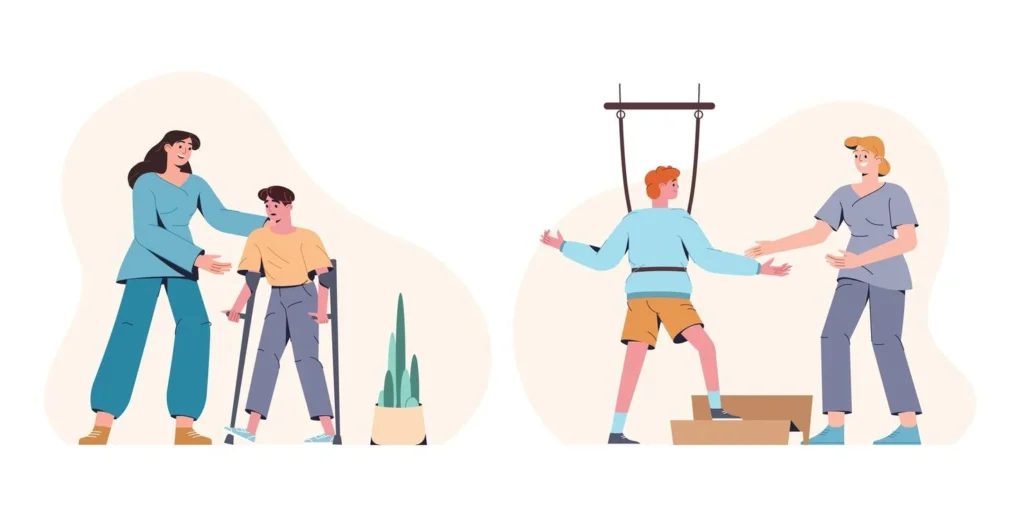In healthcare settings, patient handling depends on precision, care, and the correct equipment to guard patient safety and comfort. One of the essential tools for caregivers when transferring patients with limited mobility is hoist sling. But not all hoist slings are the same. Beyond support, high-quality slings can contribute hugely to patient comfort, reduce the likelihood of injury and make the transfer process smoother and safer. In this blog post, we check out why hoist slings quality in healthcare settings is essential and how they affect patient comfort and safety.
Improved Patient Comfort Through High-Quality Material and Design
The materials and design of the hoist sling significantly affect patient comfort, particularly the comfort of patients with reduced mobility. Soft, breathable fabrics make high-quality slings that cause skin irritation, sweating, pressure, and sores. Richer quality slings, on the other hand, can be a little bit more expensive but are typically made of more breathable, softer fabric, so if your baby is sensitive, these should be the ones you’re looking at.
A well-designed sling evenly distributes the patient’s weight, reducing pressure on specific
areas. This is especially important for bedridden patients or those with sensitive skin. High-quality slings often include padding in critical areas, like the head and neck support, to enhance comfort and reduce strain during movement.
Enhanced Safety and Reduced Risk of Injury
The quality of the hoist sling is crucial to patient and caregiver safety. The design and testing of high-quality slings are done to support different weight capacities and patient needs, with safety standards to ensure the reduction of accidents.
In contrast, low-quality slings are less durable and can wear out quickly, leading to frayed straps, weak stitching, or tears. A damaged sling increases the risk of patient falls and puts caregivers at risk of injuries as they may try to compensate for an unstable sling.
Accurate Sizing for Personalisation and Safety
One crucial but often overlooked aspect of sling quality is proper sizing and adaptability to different patients. High-quality slings come in various sizes and usually include adjustable components, allowing caregivers to fit each patient according to their specific body size and needs. An ill-fitting sling can cause discomfort and instability, making transfers difficult and unsafe. Patients in slings that are too large or too small may feel insecure, affecting their comfort and trust in their care.
A properly sized, high-quality sling enhances comfort and security, allowing caregivers to perform transfers efficiently. The right fit minimises the patient’s chances of sliding or shifting unexpectedly during movement, creating a smoother, more predictable transfer.
Specialised Design Features for Specific Patient Needs
Some patients have unique needs that require specialised sling features. High-quality manufacturers often offer slings designed for various conditions, such as for patients with spinal injuries, those needing hip stabilisation, or those requiring added support in specific areas. These specialised slings are essential for individuals with specific medical conditions, as generic slings may exacerbate injuries or fail to provide adequate support.
For example, a bariatric patient with significant body weight requires support different from a paediatric patient’s. High-quality slings cater to these varying needs with reinforced fabric, extended width, and extra safety features to support various body types safely and comfortably. This personalised approach helps caregivers provide the proper care, and patients experience less discomfort and improved safety during transfers.
Increased Ease of Use for Caregivers
Physical and emotional challenges come with caregiving, and the right equipment can give relief and make things safer for caregivers. Designed to be ergonomic, high-quality hoist slings make the process of attaching it around patients easier. They often include clear instructions, colour-coded loops, or other helpful features to simplify handling.
Lower-quality slings, by contrast, may lack these user-friendly elements, leading to more time spent on transfers and more significant physical effort. This can add to caregiver fatigue and increase the risk of errors. High-quality slings thus provide a dual benefit: they improve patient comfort and safety while safeguarding caregiver well-being. Ergonomically designed, easy-to-use slings help streamline the process, reducing stress for everyone involved.
Durability and Long-Term Cost-Effectiveness
Initial cost may be higher, but high quality hoist slings are a better investment. They are durable slings made from materials that will resist wear and tear, are solidly stitched, and have reinforced straps and fabrics capable of being washed and sterilised repeatedly.
When slings wear out too quickly, there’s a greater risk of accidents from weakened straps or damaged fabric. Choosing a durable, high-quality sling reduces these risks, ensures reliable performance, and saves money in the long run by needing fewer replacements.
Psychological Comfort and Patient Trust
The quality of the hoist sling can also impact a patient’s emotional comfort and trust in their caregivers. Patients often feel vulnerable when transferred, as they have limited control over their movements. A high-quality sling provides a sense of stability, and when patients feel secure, their confidence in their caregivers improves.
In contrast, low-quality slings can make patients feel anxious, mainly if they sense instability or
discomfort. For those patients who already have a condition that impacts their mental well-being, like dementia or a physical disability, a stable, comfortable, and high-quality sling will make a difference in their quality of life and alleviate the stress involved in the transfer.
Conclusion
Hoist slings are not just equipment, but they are an aspect of patient care and are integral in everything we do, and as such, quality slings are a must. Healthcare providers invest in slings made using durable materials with ergonomic designs and unique features to diminish patient discomfort and injury risks. High-quality slings provide reliable quality and allow caregivers to transfer patients more safely and efficiently. Eventually, hoist slings are more than just support; they represent quality care, concern for the patient’s comfort and commitment to patient safety, which all healthcare facilities strive to achieve. Making the right choice in sling quality supports patient dignity, comfort, and peace of mind during every step of their care journey.







